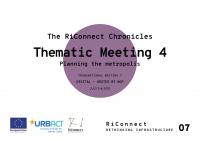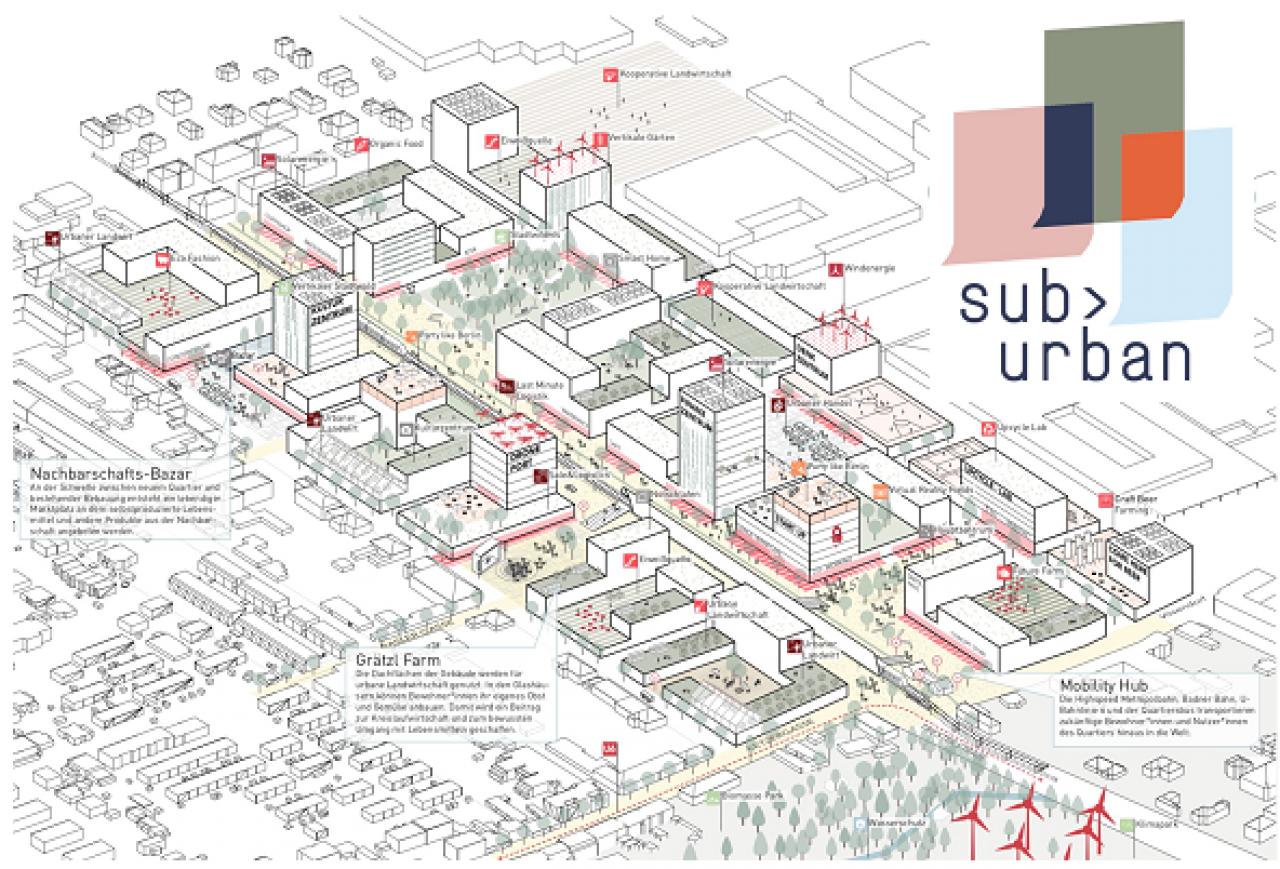
RiConnect Lead Expert Roland Krebs covers the confluence between urban planning and mobility infrastructure in this article. The integration of infrastructure can lead to new urban development, creating strong, mixed centralities.
Imagine a metropolitan area with a well distributed share of public space, parks, recreational areas, a metropolitan area where you do not need a car anymore, because you live close to a train station. Your commute to work is comfortable, sometimes to take the train, sometimes your bicycle takes to work on the 10 km bike-highway, and sometimes you just work from home, because your building provides a high-quality co-working space. The childcare is just 5 min away, you have time for your family. You buy grocery from the food-coop around the corner, you enjoy cultural events in the city. You have reserved a car from your car-pool in your building, for your weekend-trip with your family.
Many factors in the metropolitan planning system are needed to provide such an urban-rural lifestyle – the following planning decisions will lead to the described scenario:
- A system of mass public transport that allows quick commute in the metropolitan area
- An efficient active mobility planning that facilitates long distance, but also local commutes by walking and cycling
- A mixed-use urban planning scheme for metropolitan areas for creating development nodes and hubs
- A landscape planning that defines active public spaces, large scale parks (Cooling effects!) and important walking connection in the metropolitan area for leisure
- A quality-oriented urban design of projects that include mixed-use, commercial, and non-commercial uses on the ground floor zones, and define quality of decentralised office spaces for residents (co-working, home-office)
- A mobility concept for residents with a pool of cars and cargo-bikes of the area you are living in (and you don’t need the car to buy things)
- Creative bureaucracy is needed, at municipal and metropolitan level, that enables creative ideas for metropolitan projects
- Social services, especially all-day long child-care taking
- Funding of local projects with metropolitan impact and importance
- Governance model that enables development of a common vision and goals for the metropolitan region
- A metropolitan planning agency that enables the above-mentioned collaboration of the different fields of planning, decision making and balancing of public and private interests.
RiConnect is working with our partner cities towards the goal of getting closer to sustainable mobility solutions and link them with integrated planning solutions to rethink, reuse, recycle, regenerate these obsolete mobility infrastructures. We want a more dynamic, sustainable, equitable and attractive metropolis where everyone can interact with everyone and move freely regardless of their age, social rank and where they live. We have to break up with the negative mono-functionality of the settlements in the metropolitan area and create a mixed-use, proximity and short distances of the essential functions of life: mobility, leisure, work, culture, etc.
A precondition for successful metropolis development is a working and efficient mobility system, less dependency on cars and a short distance metropolis. Of course, you might not get it all, and small steps are needed to move towards this goal. Our partners have initiated this process with their Integrated Action Plans. The baseline of RiConnect are metropolitan areas that resulted from an unprecedented urban expansion when more efficient transport was invented: trains and subsequently, automobiles. This rapid suburbanisation process was structured through the speed of cars and mono functional areas were built to allocate industrial areas, residential areas, public facilities and leisure and consumer complexes, all of which were physically segregated and linked by automobile only.
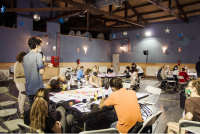
Figure 1: Co-creation workshops and a dialogue to create a tangible project vision in Barcelona. Source: AMB
How can we fix it? It is essential to develop a metropolitan vision, for example, less car use and the integration of the urban fragments through walking paths. However, integrated local action is needed for specific sites. The urban regeneration process could be triggered by the Integrated Action Plans that define activities to fix the past, but also enable new developments. For instance, the activation of urban voids like brownfields or former industrial buildings could be the trigger for urban development. Wherever possible, hubs for culture, jobs, shopping, recreations will be defined through the given opportunities. Each development pole in the metropolitan area has a different connotation, and the solutions will be specific for the given context.
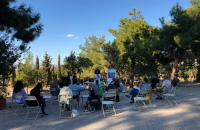
Figure 2: Placemaking is a core activity as part of the creative bureaucracy in Thessaloniki. Source: MDAT
A great example is the Metropolitan Area of Thessaloniki (MDAT). MDAT is developing a large park, Kodra, in the municipality of Kalamaria located in the east of the metropolitan area of Thessaloniki that will have an impact to the green area distribution in the whole metropolitan area. In total, there are about 15 abandoned military camps that lay unused within the urban dense fabric of Thessaloniki’s metropolitan area. The new park has a size of 36 hectares and was selected to be open to the public. The project has a clear metropolitan vision, but local actions, so we called it a place-based solution in a metropolitan context. MDAT gets active as a creative bureaucracy and convinces that Kalamaria municipality will facilitate and enable the project. The funding might come partly from the metropolitan development agency.
|
The RiConnect Chronicles 07: Thematic Meeting 4 The metropolitan scale is vital when rethinking infrastructure, given that the challenges are larger than city limits, and planning must be made accordingly. A rich discussion on metropolitan planning was held at the RiConnect Transnational Meeting 7, celebrated online in July 2021. A summary of the discussion is available at The RiConnect Chronicles 07, a record of events in the order in which they occurred, to highlight the most relevant ideas to the topic dealt with during this meeting.
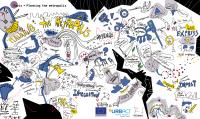
|
Roland Krebs is the Lead Expert of the RiConnect network. He is an Urban planner and urbanist, and director of Superwien urbanism, where he develops strategic action plans for cities to tackle urban growth. He has a vast, international experience in urban planning, design and development, real estate development, land use planning and regional planning.
Cover image: an integrated vision for a hub in the Vienna metropolitan area: Source: Superwien


